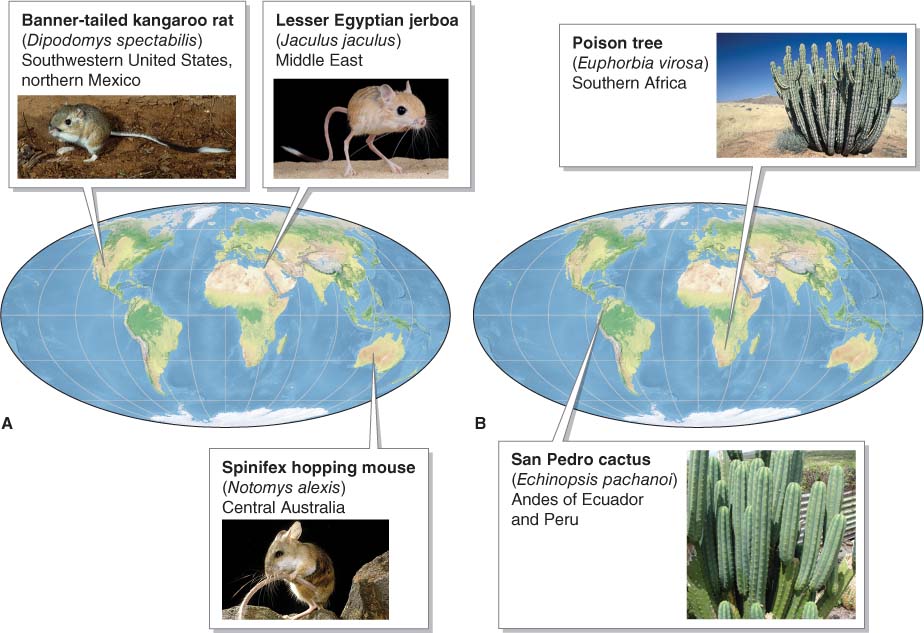
Figure 7.5
Evolutionary convergence. (A) Hopping, tufted tails, and nocturnal activity evolved in all three of these unrelated, geographically isolated mammals in response to their subtropical desert environments. Hopping is more efficient in sand than running; a flagged tail confuses predators, such as snakes; and nocturnal activity conserves water and helps the animals to evade bird predators. (B) New World cacti and Old World euphorbs are genetically unrelated plants. They look alike because they have both evolved for life in the desert. Spines, photosynthetic stems rather than leaves, and a fluted body are all adaptations to severe water deficits (see Section 7.2 also Figure 7.12).(Clockwise from top left: © Bob and Clara Calhoun/Photoshot; © Matthijs Kuijpers/Alamy; © Werner Bollmann/age fotostock/Alamy; © Forest & Kim Starr, www.starrenvironmental.com; © ANT Photo Library/Science Source)